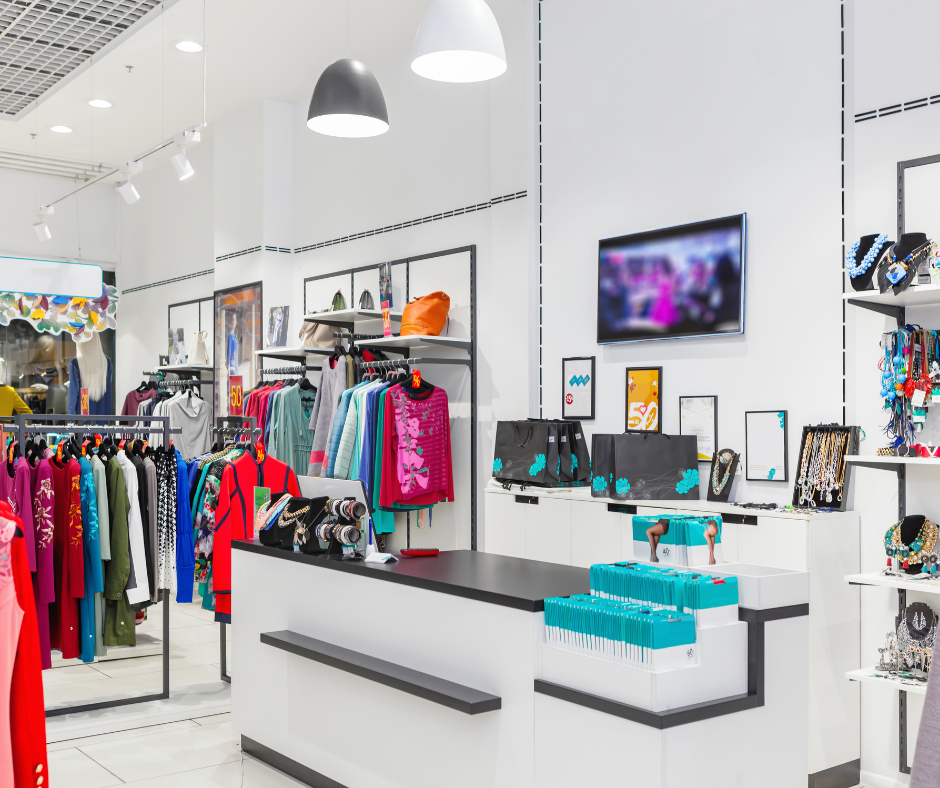24 Nov

Are you thinking about opening a clothing store? It’s a big decision, but if you’re passionate about fashion and have good business sense, it can be a very rewarding experience. Here’s a definitive guide on how to open a clothing store, from choosing a location to stocking your shelves and using clothing inventory software.
Step:1 Choose a good location
The first step in opening a clothing store is choosing a good location. You’ll want to choose a place that’s convenient for your customers and has enough foot traffic to generate sales. If you’re not sure where to start, try looking for retail space in busy shopping districts or malls.
Step:2 Develop a business plan
Once you’ve chosen a location, it’s time to start developing your business plan. This document will outline your store’s goals, strategies, and financial projections and especially choose a perfect apparel pos that suits your business needs. You’ll need to do some market research to determine things like your target market, competition, and pricing strategy.
Step:3 Choose your store’s concept
One of the most important aspects of opening a clothing store is deciding on your concept. This will determine everything from the type of clothing you sell to the way your store is designed. Are you targeting a specific demographic? Do you want to carry high-end designers or budget-friendly brands? Keep your concept in mind as you move forward with your plans.
Step:4 Create a budget
Before you can start purchasing inventory or leasing retail space, you need to create a budget. This will help you stay on track as you start spending money on your business. Make sure to account for all of your start-up costs, including the cost of inventory, fixtures, and signage.
Step:5 Choose a name and brand
Your store’s name and brand are important elements of your business. They’ll help you build recognition and create a unique identity for your store. When choosing a name, try to come up with something that’s memorable and easy to say. As for your brand, you’ll want to develop a visual identity that reflects your store’s personality.
Step:6 Apply for permits and licenses
Depending on the type of business you’re running, you may need to apply for permits and licenses. These can vary from state to state, so it’s important to do your research. Commonly required permits for retail businesses include a sales tax permit and a business license.
Step:7 Find suppliers
Once you have your budget in place, it’s time to start looking for suppliers. If you’re carrying high-end designers, you’ll need to find a reputable showroom or distributor. For budget-friendly brands, try searching for wholesalers online. You can also buy direct from some manufacturers.
Step:8 Planning store layout
A well-designed store layout can make a big difference in how customers perceive your store. You’ll want to create a layout that’s easy to navigate and makes the best use of your available space. When planning your store layout, be sure to keep things like traffic flow and product placement in mind.
Step:9 Stock your shelves
Now that you have your supplies, it’s time to start stocking your shelves with the help of retail inventory software. This is where your concept comes into play. Choose items that you think will appeal to your target market. If you’re not sure where to start, try browsing fashion magazines or online retailers for inspiration.
Step:10 Promote your store
Once your store is stocked and ready to go, it’s time to start promoting it. Create a marketing plan that includes traditional methods, like print ads and flyers, as well as digital strategies, like social media and email marketing. Make sure to include a grand opening promotion to attract customers on your first day.
Step:11 Hire & train staff
If you’re planning on opening a brick-and-mortar store, you’ll need to hire a staff. This includes salespeople, cashiers, and customer service representatives. You’ll also need to train your employees on how to properly handle sales, returns, and other customer service issues. You’ll also need to train them on your store’s policies and procedures. This includes things like customer service, cash handling, and product knowledge. You can create your own training program or use one of the many programs available online. Don’t forget to use the best pos system for retail clothing store to track your staff’s performance and activities!
Step:12 Plan a grand opening
To generate excitement and get people in the door, you’ll need to plan a grand opening for your store. This event should include things like special discounts, giveaways, and demonstrations. You can also invite local celebrities or media personalities to help generate buzz.
Step:13 Measure your success
After you’ve been in business for a while, it’s important to take stock of your progress. Are you meeting your sales goals? Are your customers happy? What could you be doing better? Use this feedback to make changes and improve your business.
Opening a clothing store can be a daunting task, but it’s also a very rewarding experience. By following these steps, you can set your store up for success.
Hana Retail is the perfect pos system for your clothing store. With our clothing store pos, you can manage inventory, process sales, and track customers – all in one place. Our pos retail system makes it easy to keep your store running smoothly and efficiently.





